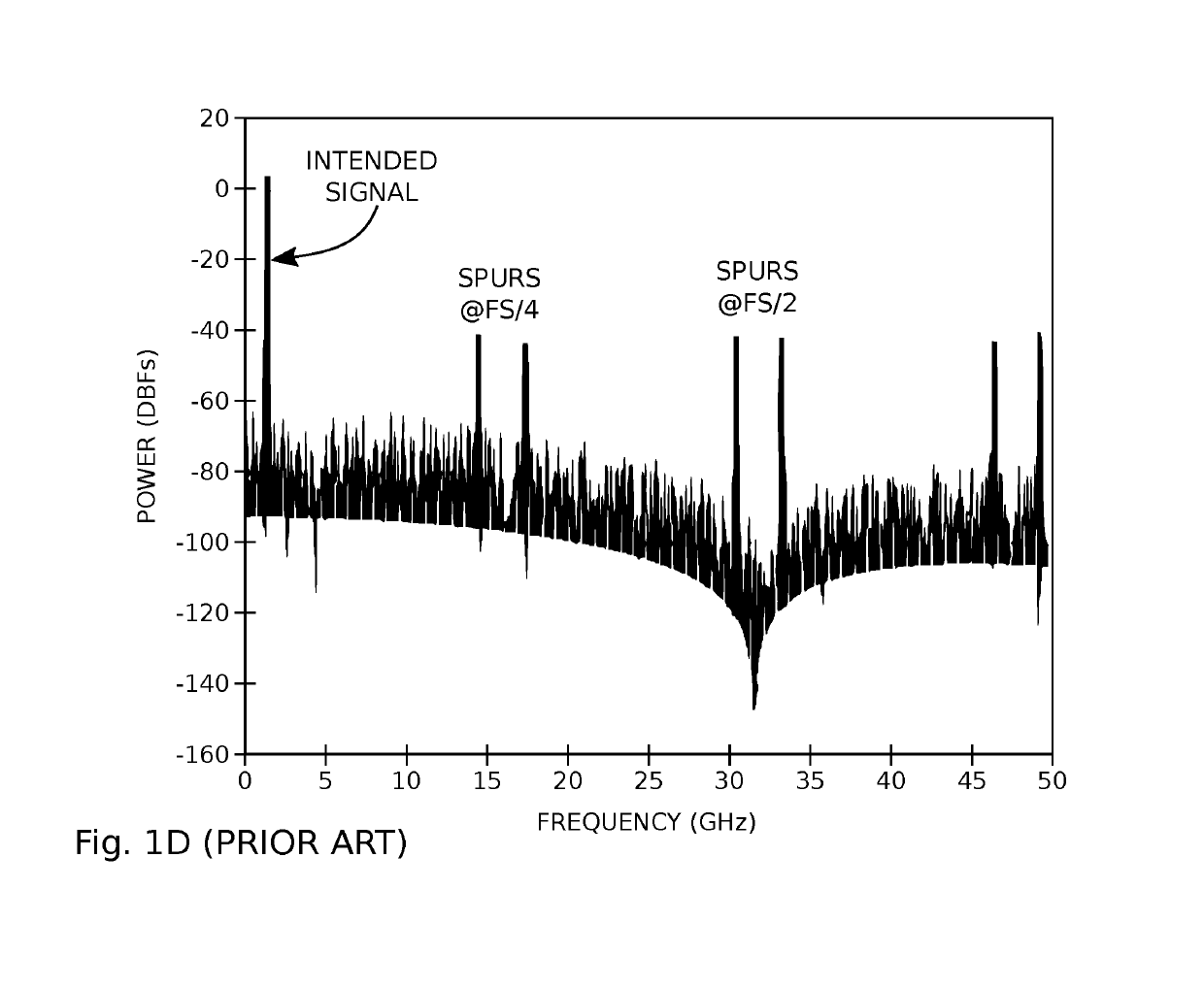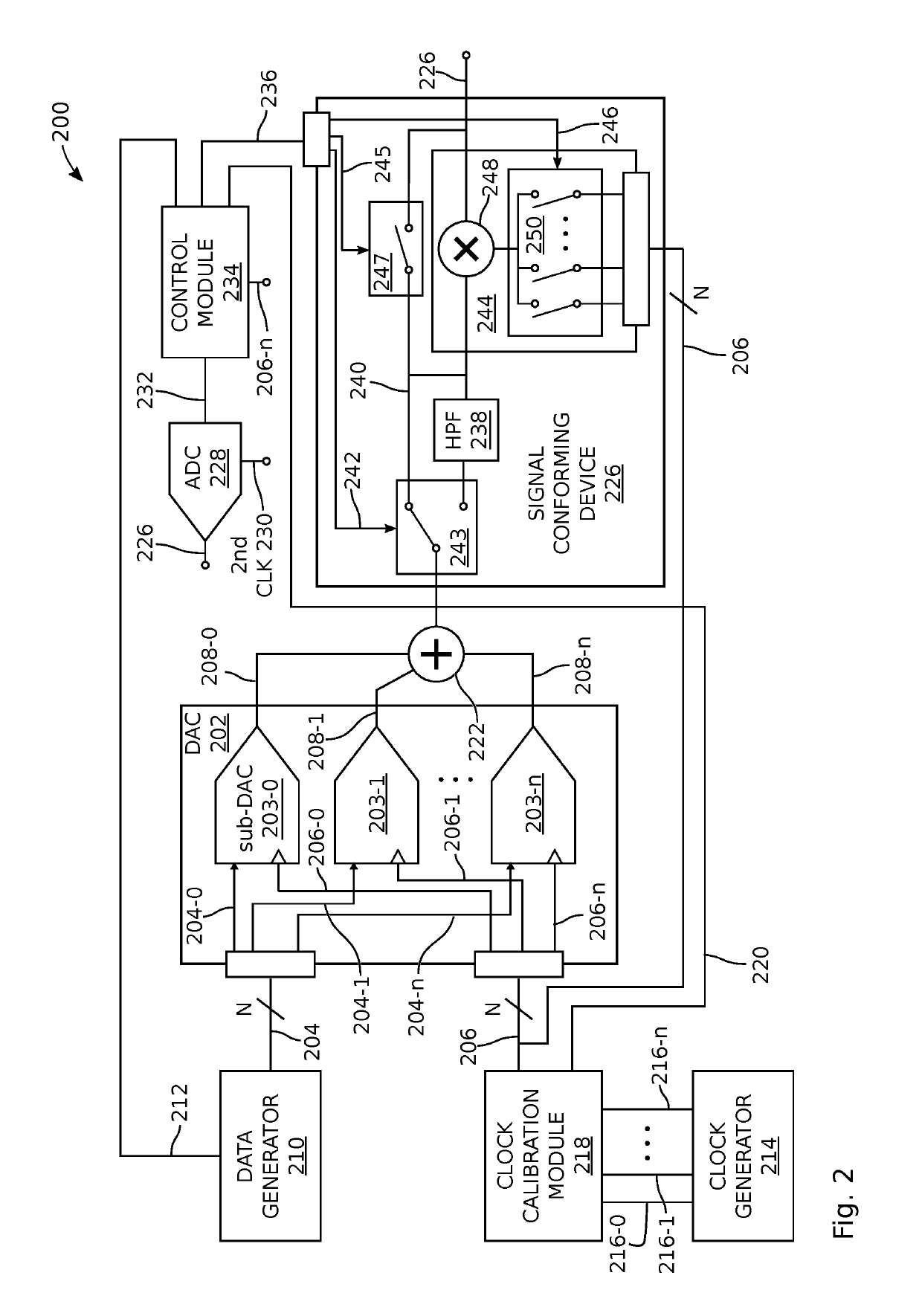System and method for interleaved digital-to-analog converter (DAC) calibration
a digital-to-analog converter and calibration system technology, applied in transmission systems, physical parameter compensation/prevention, instruments, etc., can solve the problems of difficult to address timing errors, interleaved dacs are particularly susceptible to dynamic errors, interleaved dacs are more sensitive to timing errors, etc., to improve spectral performance (sfdr), improve sensitivity, and improve the effect of spectral purity in ultra-high speed operation
- Summary
- Abstract
- Description
- Claims
- Application Information
AI Technical Summary
Benefits of technology
Problems solved by technology
Method used
Image
Examples
Embodiment Construction
[0031]FIG. 2 is a schematic block diagram depicting a system for calibrating an interleaved digital-to-analog converter (DAC). The system 200 comprises an interleaved DAC 202, which, in turn, comprises 2N selectively enabled sub-DACs, 203-0 through 203-n, where N is an integer greater than or equal to 1. For example, the sub-DACs may be current-steering. However, the system is not limited to any particular type of DAC architecture. Each sub-DAC has an input, respectively on lines 204-0 through 204-n (bundled as 204), to accept a digital data signal, a clock input, respectively on lines 206-0 through 206-n (bundled as 206), to accept a first clock signal with unique phase, and an output, respectively on lines 208-0 through 208-n, to supply analog signals converted from the data signal.
[0032]A data generator 210 has 2N outputs on lines 204-0 through 204-n to respectively supply 2N data signals to the 2N sub-DACs corresponding to a fundamental (intended) analog signal (e.g., a voltage ...
PUM
 Login to View More
Login to View More Abstract
Description
Claims
Application Information
 Login to View More
Login to View More - R&D
- Intellectual Property
- Life Sciences
- Materials
- Tech Scout
- Unparalleled Data Quality
- Higher Quality Content
- 60% Fewer Hallucinations
Browse by: Latest US Patents, China's latest patents, Technical Efficacy Thesaurus, Application Domain, Technology Topic, Popular Technical Reports.
© 2025 PatSnap. All rights reserved.Legal|Privacy policy|Modern Slavery Act Transparency Statement|Sitemap|About US| Contact US: help@patsnap.com



